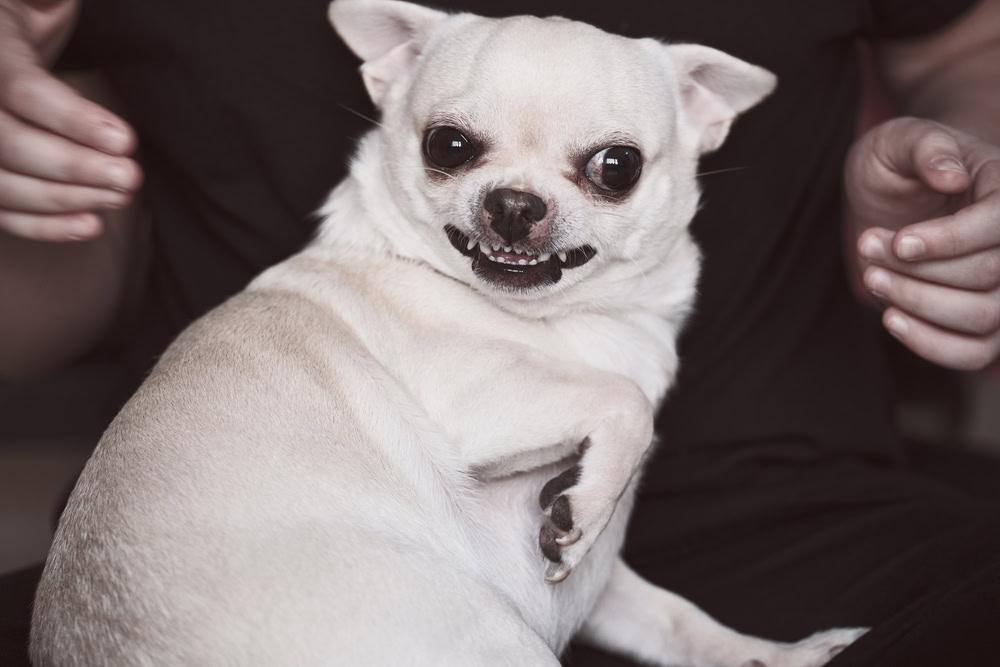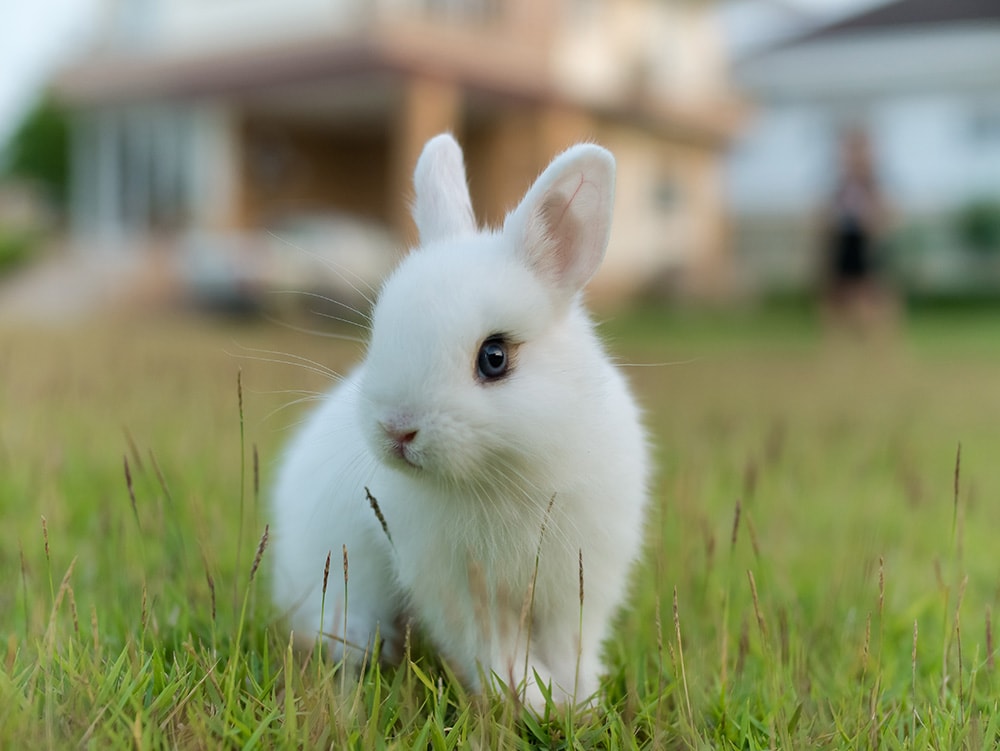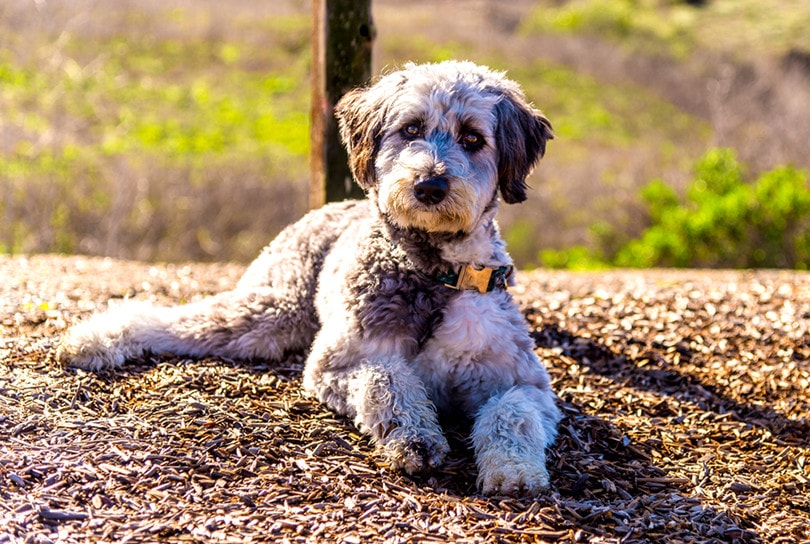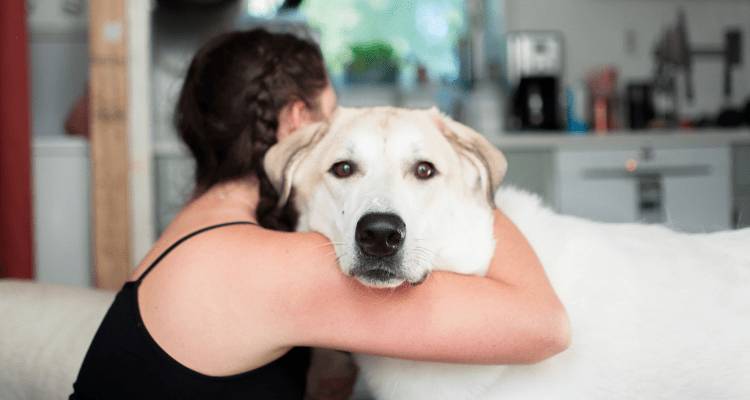Dogs growl in a variety of situations to express their emotions. They might growl when resource-guarding their favorite toy, while playing a lively game of tug-of-war with you, when warning another dog to back down, and even when you pet them. We can understand why they growl when protecting something and when issuing a warning that they’ll get aggressive, but why growl when they’re enjoying something such as being petted by their favorite human?
Read on to find seven potential reasons your dog is growling while getting petted and what you need to do to address this behavior.

The 7 Reasons a Dog Growls While Getting Pets
1. They’re Enjoying Themselves
Dogs will vocalize in many different ways when they’re enjoying themselves. So, while most people associate growling with aggression, it can be quite the opposite.

2. They Feel Threatened
A deep, rumbling growl typically occurs when dogs feel threatened or possessive. It can often be a sign that you’re encroaching on their personal space. This kind of growl often isn’t meant to be aggressive, but instead, it’s intended as a polite warning to show that your pup is uncomfortable.
Many different situations can cause your pup to feel threatened. For example, a new person or pet in the home can put your dog on the defense. If you approach them for pets while they’re feeling threatened, they may not be growling at you but at the situation at hand.
3. They’re Nervous or Afraid
If your dog is a bit skittish, they may not know how to react when you give them pets. While it might appear as if your dog is open to getting petted, you may be misinterpreting their body language as such. They might actually be asking for space, not for physical touch.
This is especially true if your pup has been poorly socialized or has been in an abusive situation in the past. They may not know what to expect when you approach them to give them a stroke.
Other signs of nervousness or fear include:
- Cowering
- Panting
- Withdrawal
- Hiding
- Irritability
- Aggression
- Tail tucked low
- Ears back

4. They Don’t Like It
It is a common misconception that every dog enjoys getting belly rubs, pats on the head, and pets on their body. Not all dogs enjoy physical touch, and your pup’s growling may be their way of telling you to back off.
5. They’re Overstimulated
Dogs can get overstimulated just like humans, so if your pup seems to enjoy getting pets for the first few seconds and then growls afterward, it could just be that they’ve had enough.

6. They’re in Pain
In some cases, the dog may suffer from a health issue that makes petting painful. For example, ear infections and head pain can be exacerbated by petting.
Pups in pain will typically exhibit other signs, including:
- Snapping
- Avoidance behaviors
- Yelping
- Shaking
- Whining
- Loss of appetite
7. They’re Surprised
If your pup was happily snoozing away and you woke them up for pets, they might growl at you simply out of surprise. Some dogs will naturally react to being startled by growls. It’s essential to give your pet a warning sign that you’re approaching and not suddenly touching them when they least expect it.


What to Do if Your Dog Growls
It can be unsettling for a dog owner to be greeted with growls whenever they try to pet their dog. However, there are some things you can do if your pup has made it a habit to vocalize whenever you try to touch them.
1. Identify the Cause
Your first job is to identify the cause of your dog’s growling. Remember, they’re growling in the first place because they’re trying to communicate something to you.
Consider what your dog was doing before you started petting them. Did you interrupt them in the middle of something? Another thing to examine is whether your pup exhibits any other signs that could indicate pain, discomfort, or anxiety. If this may be the case then it’s advisable to book your dog in for a checkover with your vet to rule out any medical issues that need addressing.

2. Remain Calm
The last thing you want to do when your dog growls at you is react strongly or, even worse, punish them. If you react negatively toward them, you’ll only inhibit the growling, potentially exacerbating the underlying issue without having addressed it at all.
3. Eliminate the Trigger
Once you’ve identified the trigger for the growling, it’s essential to do what you can to remove it from your dog’s life.
4. Redirection
Finally, redirection is vital to teaching your dog more desirable behaviors. If your dog’s growling is caused by fear or anxiety, you may be able to move your dog away from the situation and redirect their attention by providing them with a toy or activity they enjoy. Take them on a walk or play fetch. We also recommend interrupting the growling using a neutral noise, such as a finger snap or quick whistle. The noise you choose mustn’t be loud or startling, but instead just loud enough to grab your pup’s attention.

5. Get Help
If your vet has ruled out medical issues but you’re overwhelmed and not sure where to start to address your dog’s growling, a professional trainer or canine behaviorist will be worth the cost. Choose a trainer who utilizes positive reinforcement, not one who endorses punitive training techniques.

How Can I Know What My Dog’s Growls Mean?
If dogs use their growls to express different emotions, how can an owner know precisely what their pup’s vocalizations are trying to tell them?
One of the best ways to gauge your pup’s mood is by examining their body language. If your dog gives you a submissive grin or playful bows while growling, it is likely that they’re just in a goofy mood and ready to play. If they are very stiff or staring hard while growling, you need to back off.
The tone of a growl can help decipher their mood, too. Loud growls with a higher pitch may mean something completely different than one that’s softer and lower pitched.

Final Thoughts
A dog’s growls can mean many different things, so to know what your pup is trying to tell you, you need to familiarize yourself with your dog’s vocalizations and body language cues.
A dog that’s growling while you’re petting them could be trying to tell you a myriad of things like they’re happy, nervous, afraid, unhappy, overstimulated, or in pain. By using the context clues your pup is giving you, you should be able to tell what emotion is guiding their growling.
Featured Image Credit: Chebakalex7, Shutterstock



